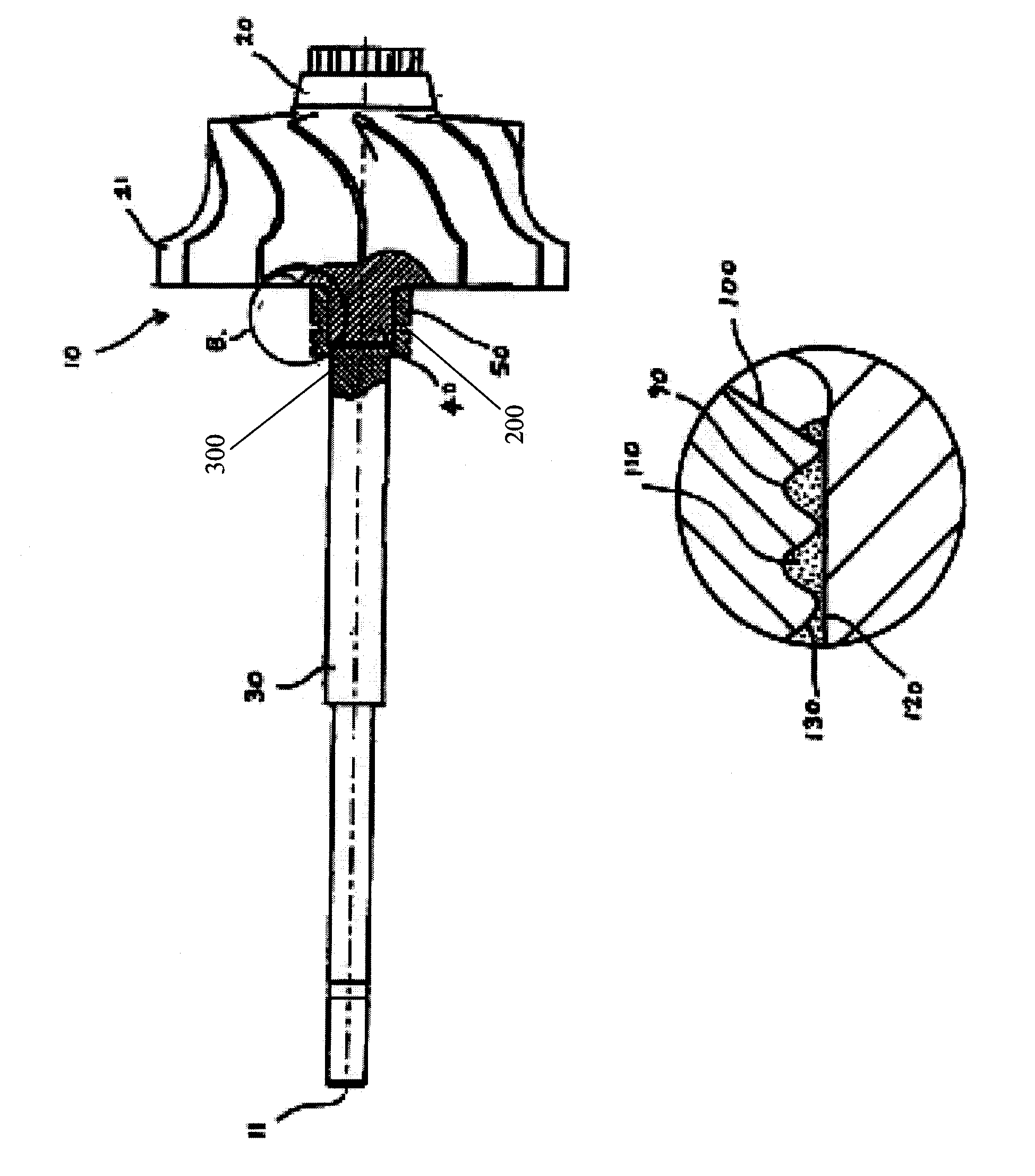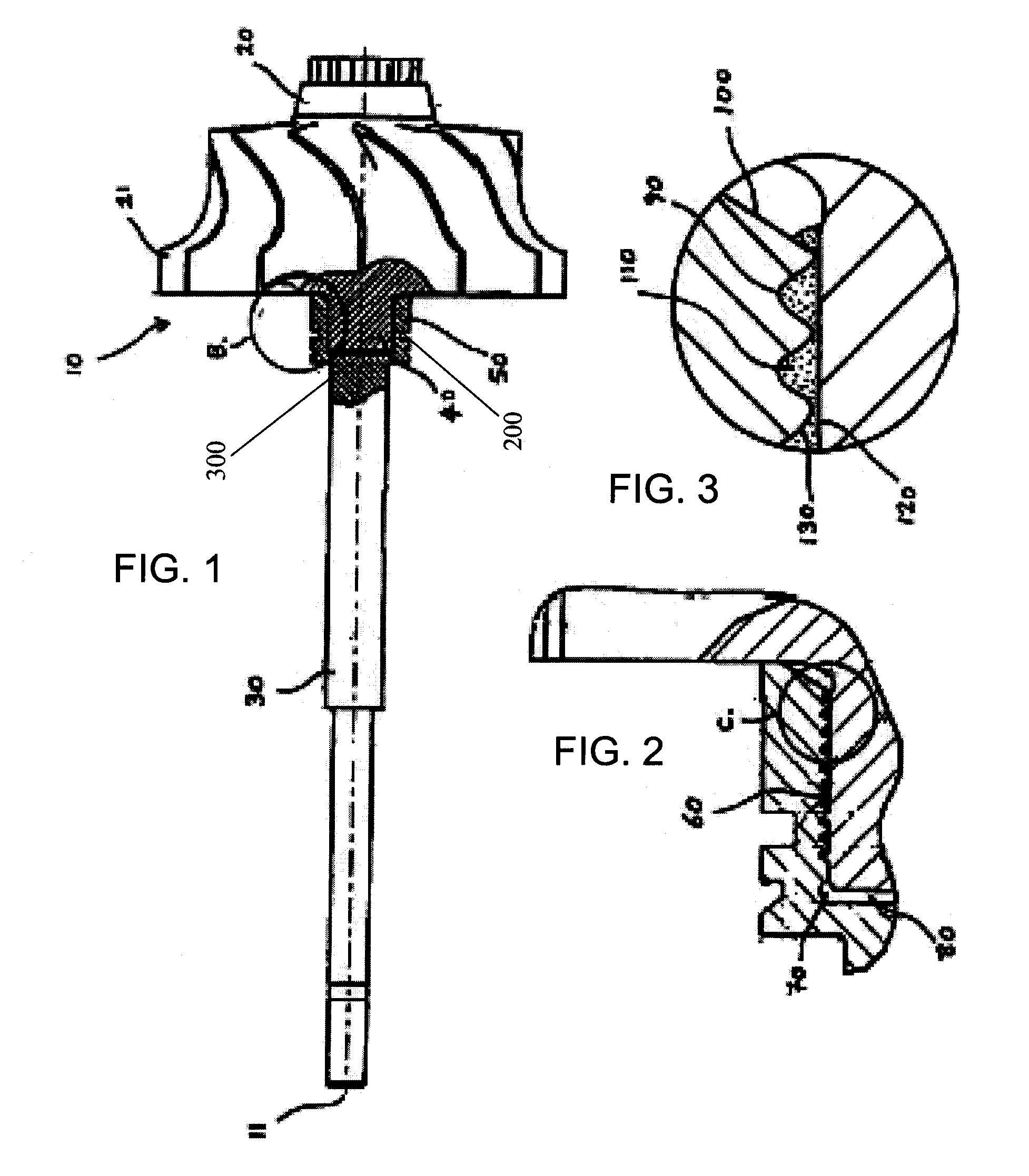Titanium aluminide wheel and steel shaft connection thereto
a technology of titanium aluminide and steel shaft, which is applied in the direction of blade accessories, machines/engines, waterborne vessels, etc., can solve the problems of difficult balancing between the thermal expansion of the ceramic rotor and the metal casing to maintain the clearance required, and achieve the effect of transmitting a relatively high shaft torqu
- Summary
- Abstract
- Description
- Claims
- Application Information
AI Technical Summary
Benefits of technology
Problems solved by technology
Method used
Image
Examples
examples
[0046]In these examples, rotor shaft assemblies are produced from a 4140 steel shaft and a TiAl rotor using a Cusil ABA braze and a moderate pressing force. The inner diameter of the shaft at the joint (D) and the length of the protruded portion of the rotor (X) were chosen as follows:
[0047]
D (inches)X (inches)Example 10.4550.435Example 20.5250.435Example 30.6540.571
[0048]At a testing temperature of 1100 F. (75% of the brazing temperature), the strength of the joint is more than three times higher than the strength obtained with heat-shrink alone in the absence of braze.
[0049]Various modifications and changes may be made by those having ordinary skill in the art without departing from the spirit and scope of this invention. Therefore, it is to be understood that the illustrated embodiments of the present invention have been set forth only for the purposes of example, and that they should not be taken as limiting the invention as defined in the following claims.
[0050]The words used i...
PUM
| Property | Measurement | Unit |
|---|---|---|
| temperature | aaaaa | aaaaa |
| temperature | aaaaa | aaaaa |
| mass | aaaaa | aaaaa |
Abstract
Description
Claims
Application Information
 Login to View More
Login to View More - R&D
- Intellectual Property
- Life Sciences
- Materials
- Tech Scout
- Unparalleled Data Quality
- Higher Quality Content
- 60% Fewer Hallucinations
Browse by: Latest US Patents, China's latest patents, Technical Efficacy Thesaurus, Application Domain, Technology Topic, Popular Technical Reports.
© 2025 PatSnap. All rights reserved.Legal|Privacy policy|Modern Slavery Act Transparency Statement|Sitemap|About US| Contact US: help@patsnap.com


